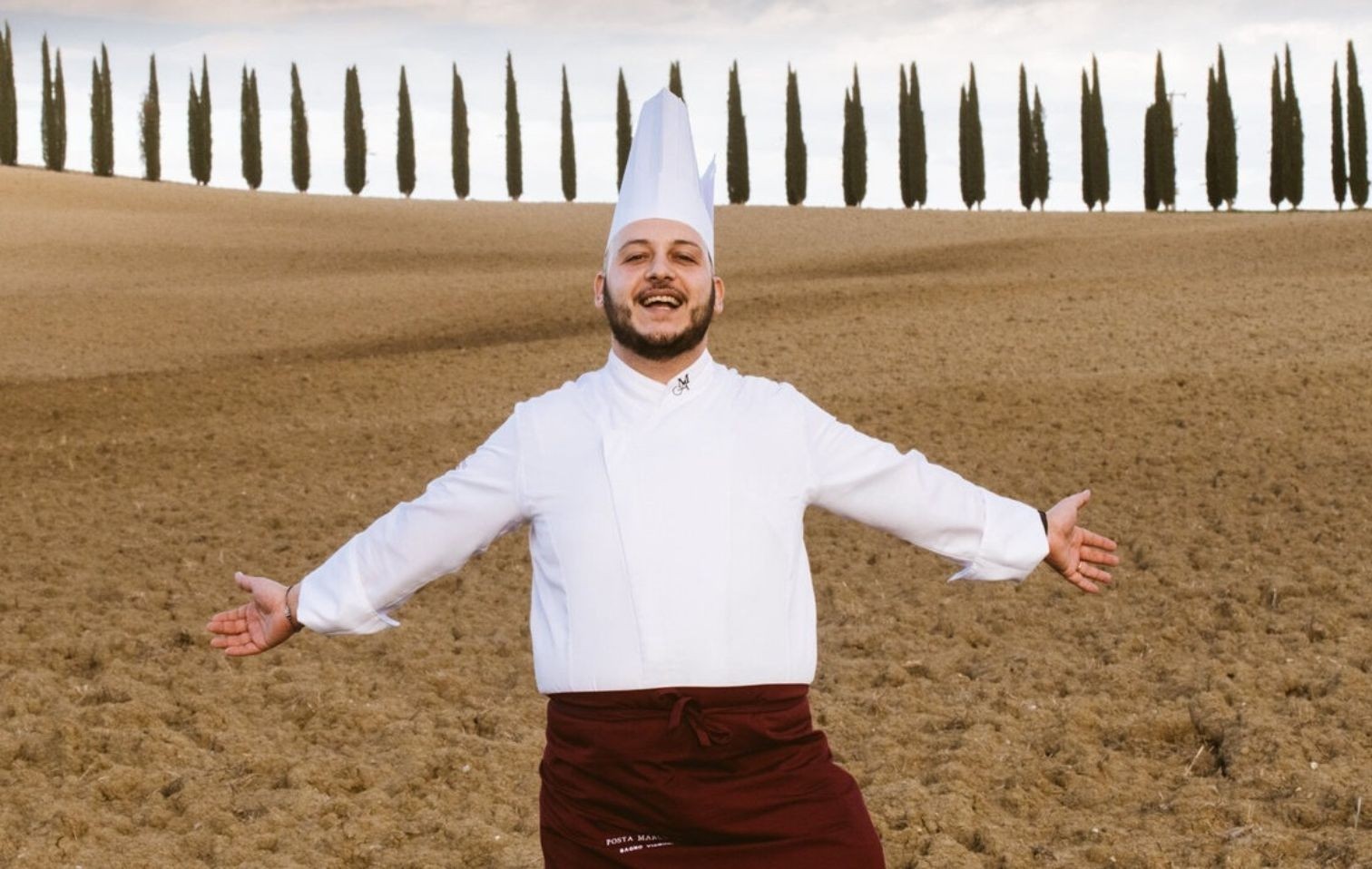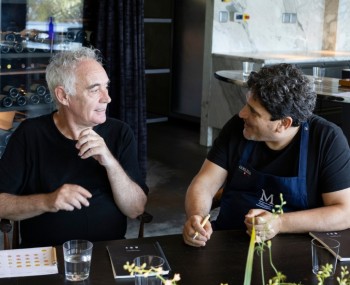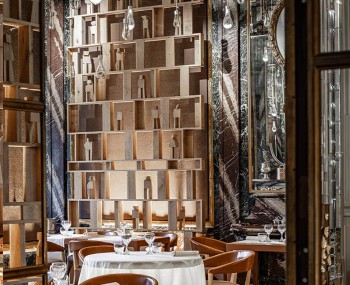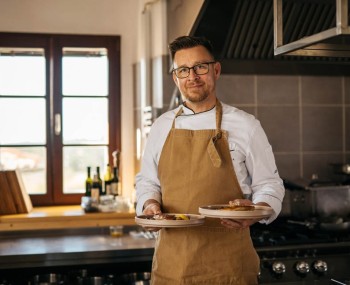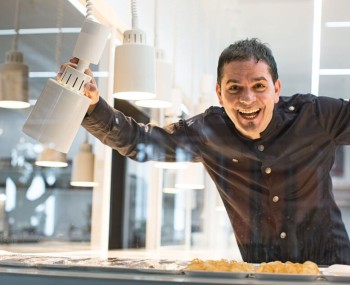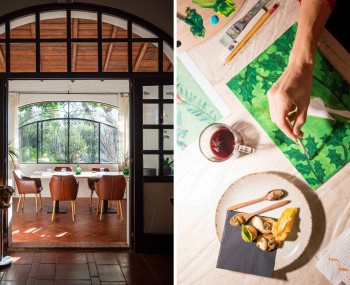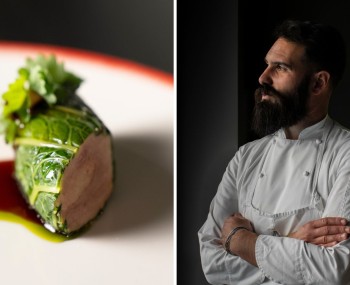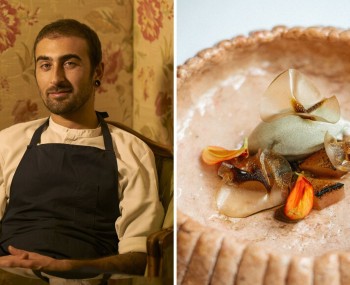In the heart of the Italian countryside lies a quaint village of 30 souls, an idyllic escape where time seems to stand still. Amidst the picturesque landscape, an aquatic oasis with natural springs beckons travelers seeking respite from the world's hustle. But the true gem of this hidden haven is the centennial Posta Marcucci hotel, a remarkable establishment that shatters the norms of holiday planning.
The Story
If you travel often, you've probably lost count of the countless initiation rituals that mark the dreaded pre-departure phase. In that torrid limbic stage, some struggle to zip up their suitcase while others are forced to turn back to retrieve a lost ID amidst an Everest of shorts and trekking boots. Sometimes, restlessness taints the journey, even spoiling the moment of arrival. But some destinations are an exception and serve as case studies against the weariness of modern vacations. In Val d'Orcia, for example, the tension evaporates as quickly as the nightly frost under the scorching summer rays.

A glance at the slopes combed by cypresses is enough to understand that this place rewards those who choose it, confidently moving away from the Florentine circuits to ride the wave of the gentle Sienese hills. And it is right here, not far from the border with Umbria, that the natural springs of Bagno Vignoni emerge, a long-standing aquatic attraction in a retro village with only 30 inhabitants.

The Hotel Posta Marcucci overlooks these springs and follows their dense water maze, as if it were born from the depths of the earth itself. Perhaps because, between a "no, thank you" to mass tourism and a caress to the UNESCO-protected heritage panorama, the Costa family's soft approach has simply amplified the beauty that reigns supreme in this tiny portion of Tuscany.
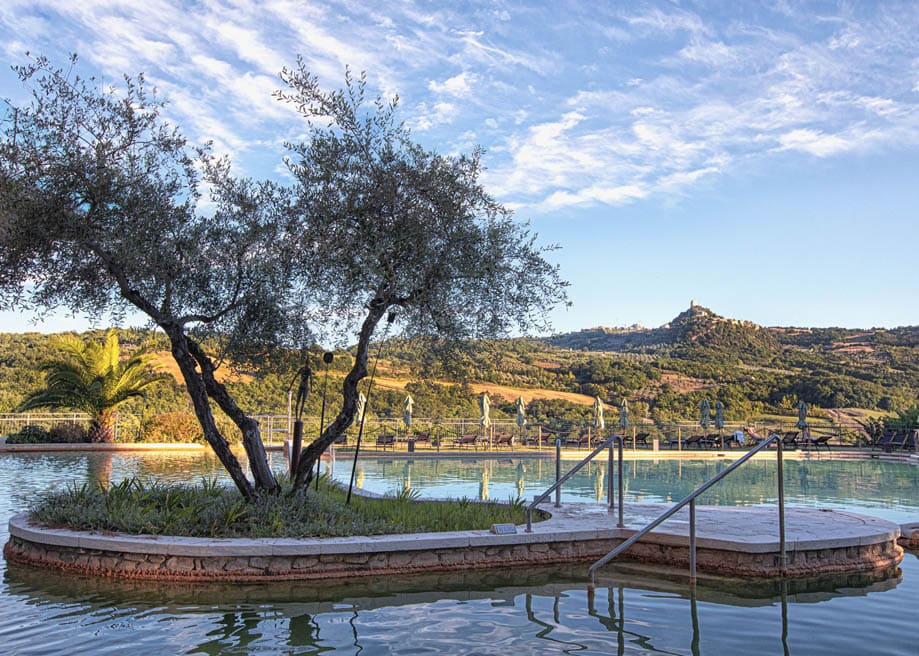
The Hotel
Crazy but true, the duo of pools that greets the eye at the entrance is the result of a pure accidental discovery: the idea of transforming the old inn, once a refuge for numerous pilgrims, into a comfortable hotel arose in the mid-20th century. It was during the renovation works that the founders saw the first hot stream emerge from the ground at a temperature of 49 degrees Celsius (a unique feature in Italy): thus, the project of the small thermal oasis was born, now managed by the Costa family, who also lead La Perla in Corvara and took over from the Marcucci in 2017.
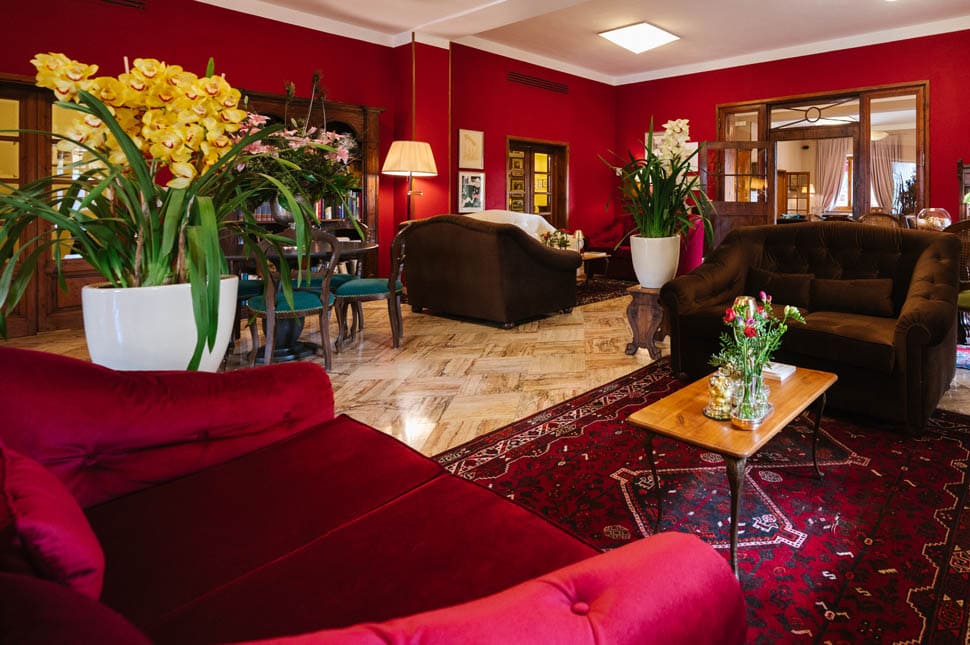
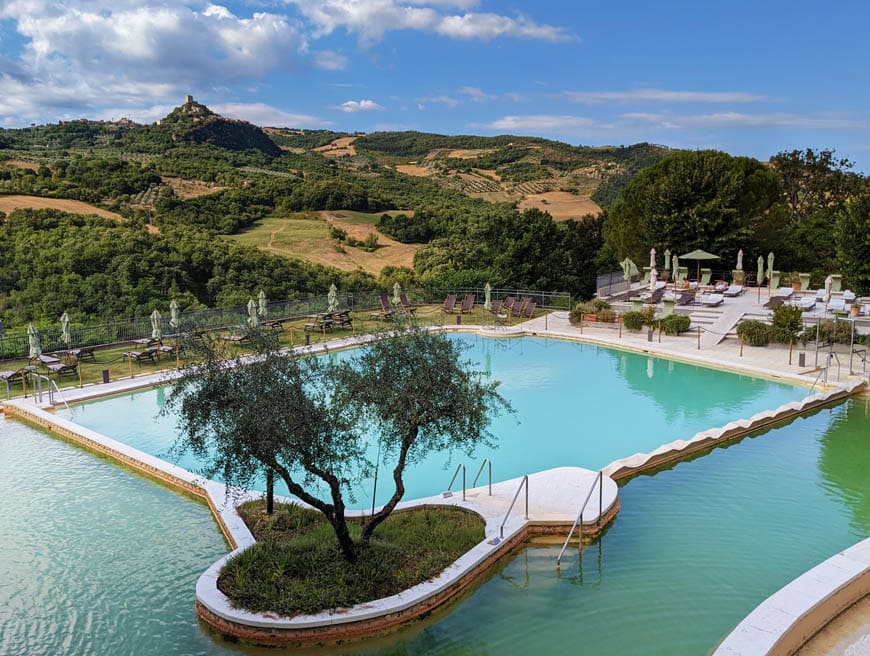
However, it would be reductive to focus solely on the benefits of immersing oneself in the therapeutic basins, the ritual of spa massages, or the imprint of the green lung that spreads its colors all around, from the lounge to the "aerial" restaurant. Predictability has no place here, often overturning the assumptions of holiday planning.

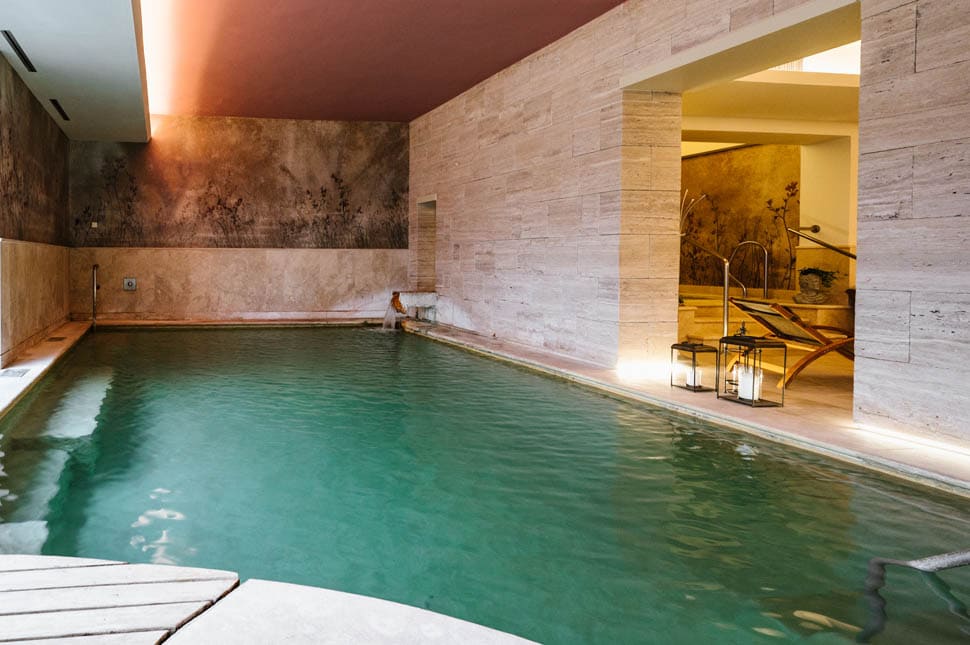
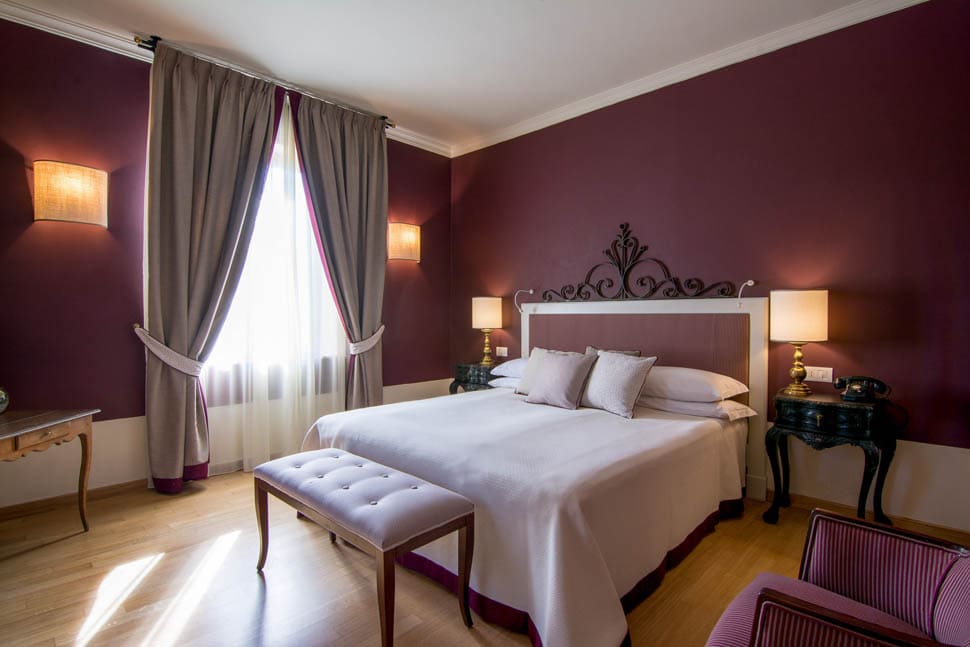
For instance, when it's time for an aperitif, guests gather at the outdoor kiosk or the cocktail bar overflowing with vinyl records, where the talented Alessio Crovella creates twists designed to elevate drinks to the level of the panoramic views, skillfully mixing a St Germain Spritz with Franciacorta, lime, and mint, and a pleasant low-alcohol infusion set on fruit. For incurable romantics, weekend nights are enlivened by long baths under the stars. Moreover, the park features a double court – for bocce and tennis – inviting guests to rediscover outdoor sports during their stay.
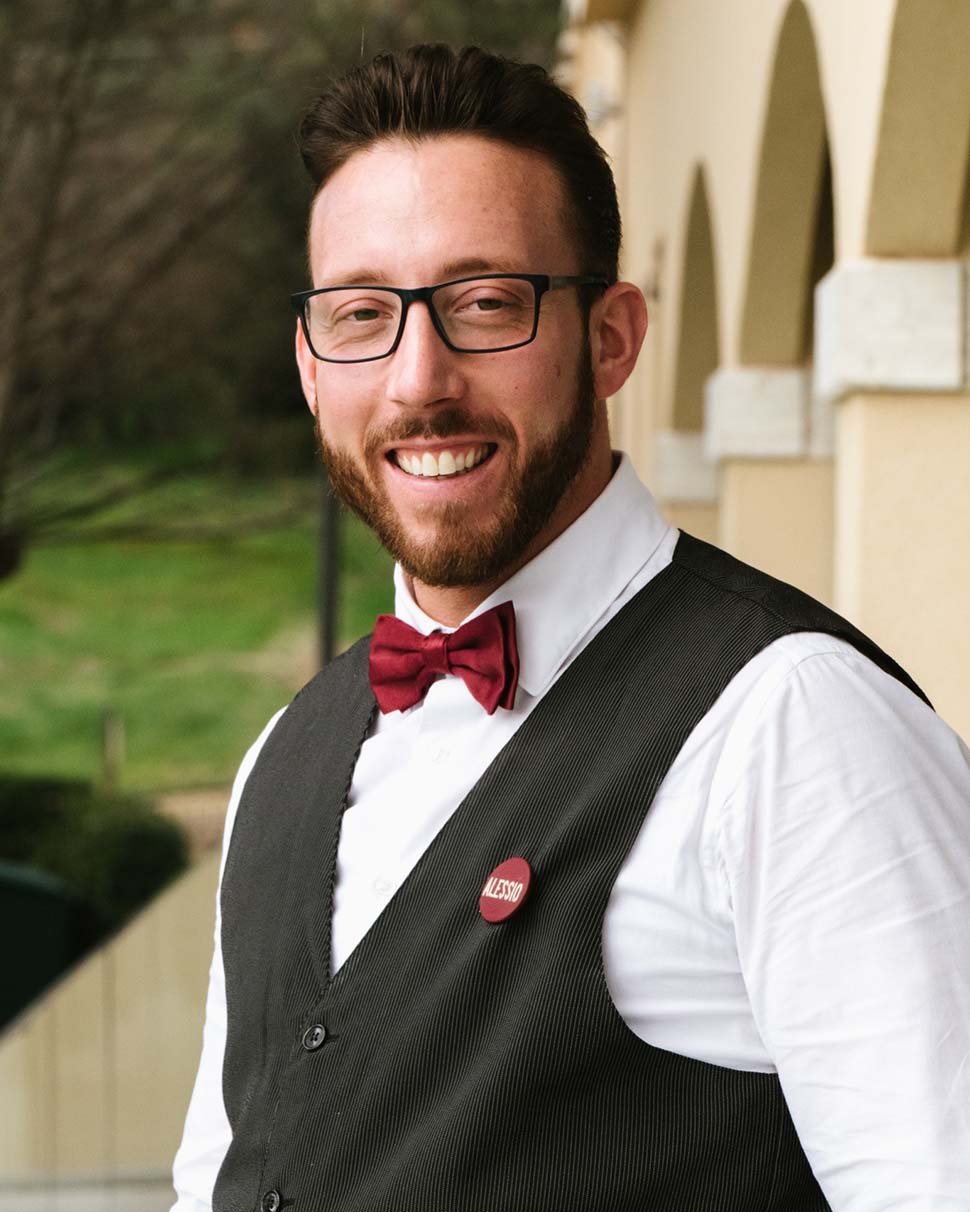

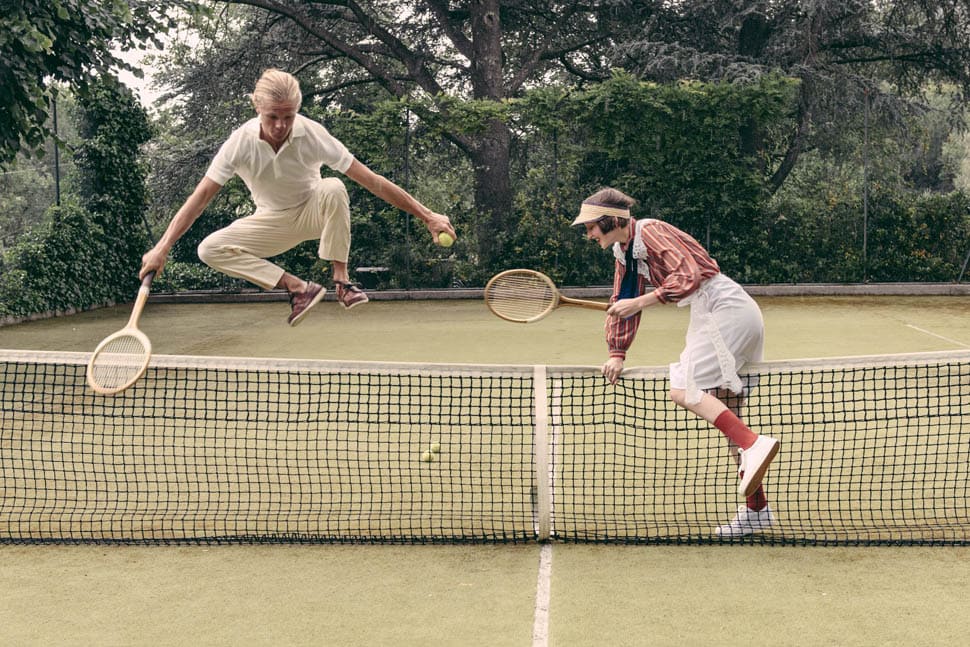
But above all, resident chef Matteo Antoniello knows well how to navigate the maze of demands and expectations that is the Tuscan hotel industry, raising his antennas to capture the (more or less silent) desires of guests devoted to the adoration of dining.
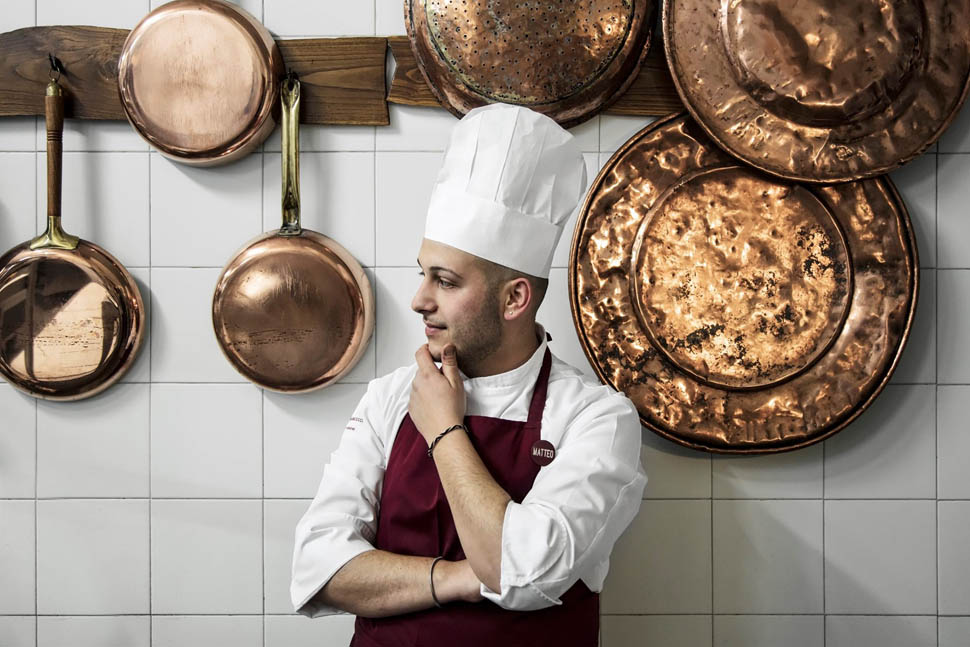
The dishes stand out for their delicate yet solid structure, a pervasive attention to detail that extends to even the smartest offerings. "We keep our feet planted on the hill and our gaze fixed on the horizon: our cuisine reflects a plural ecosystem, refusing to be confined by forced proximity," he explains, stoking the flames of interest.
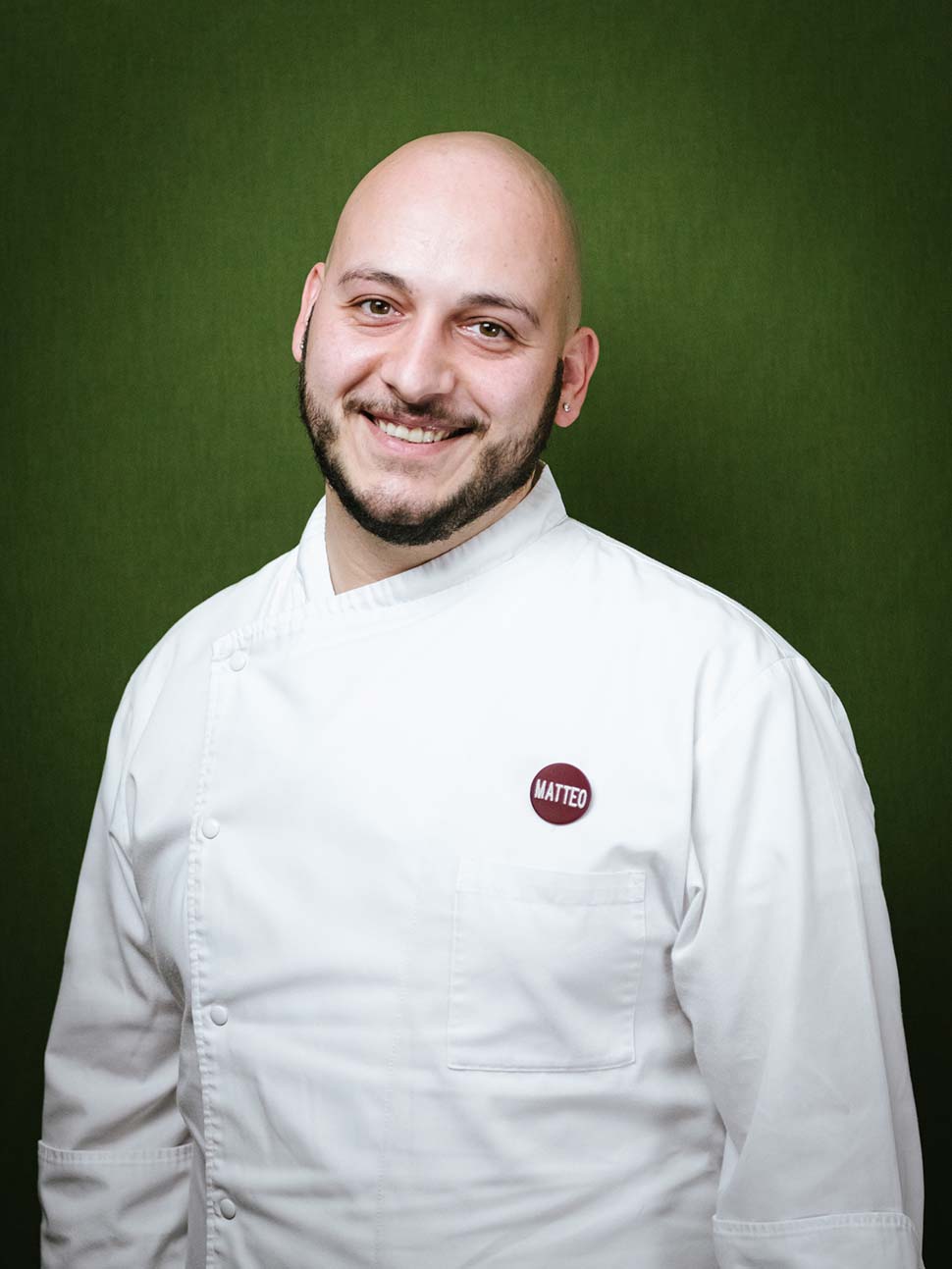
The menu brings together "pici" pasta and scallops, long-aged meats and citrusy risottos, spiced desserts, and olive oil ice cream. The common thread? The pursuit of true craftsmanship, wherever it may be found. "I believe that respect is the first link in the ethical chain. For example, when choosing meat or fish, it's not just about their origin; it's about knowing the animals' lives, so they can intertwine with ours."
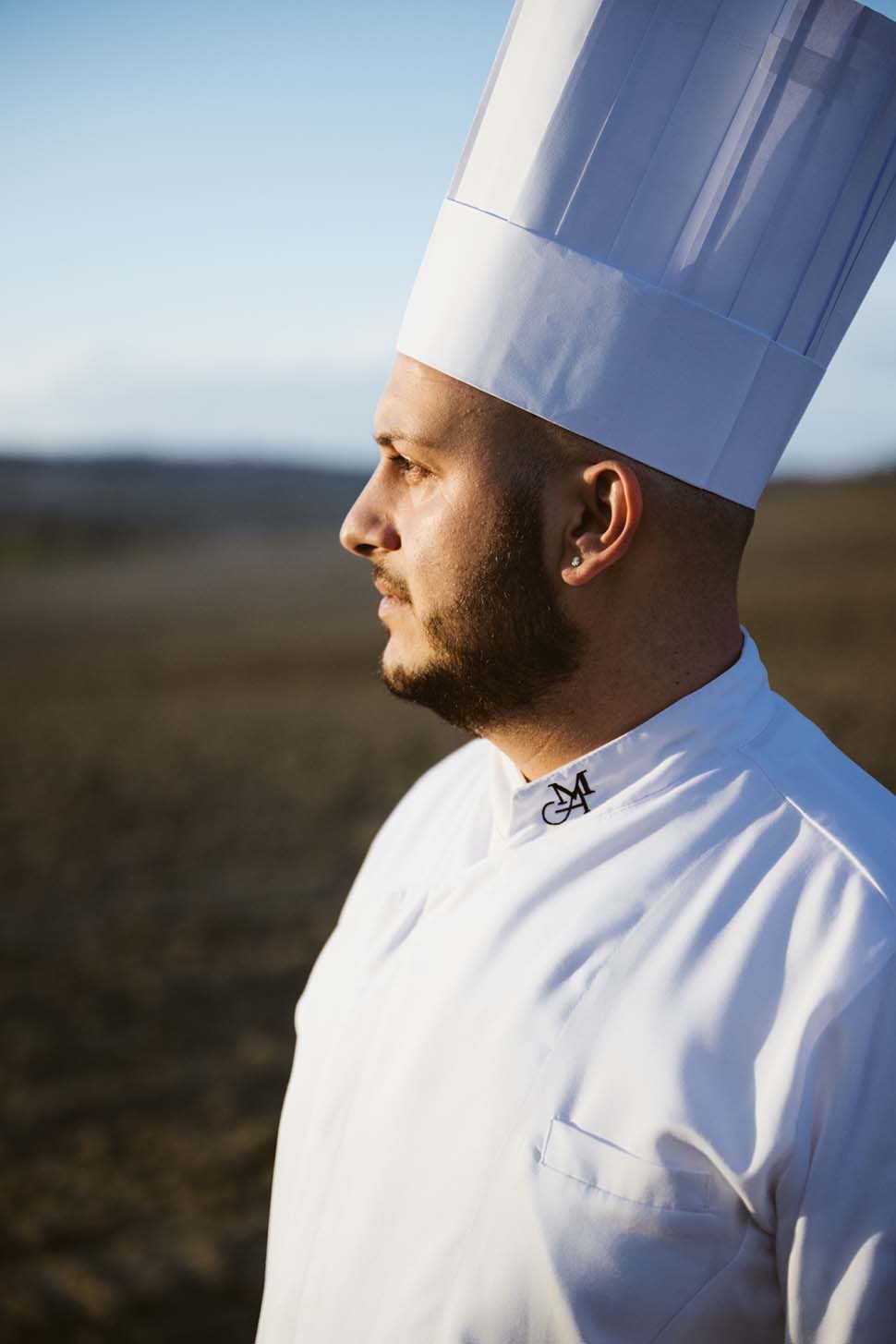
This concept applies to everything, from wines to derivatives: just consider that the soft omelette served for breakfast incorporates eggs from hens raised with music therapy and the freedom to roam in wide green spaces. Whether you believe it or not, the difference is readily evident. But what can a seasoned taste hunter expect from a "top-floor" dinner at the hotel?
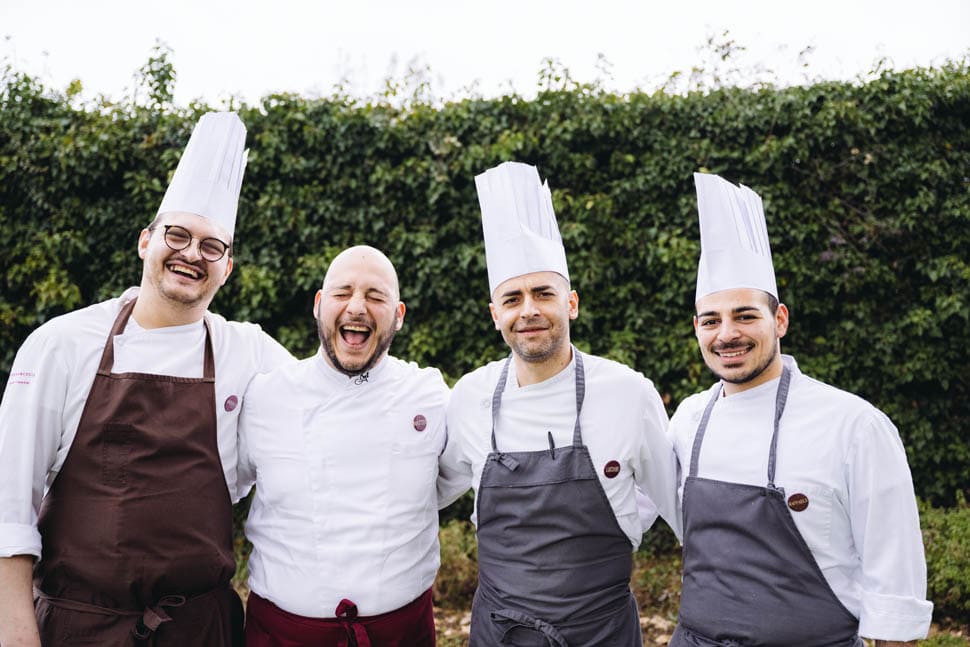
The Restaurant
The dining room resembles a vermilion jewel box that offers a wide-angle view of the surrounding heights; the menu is a close-up on Italian excellences, gathered in a friendly setting without any desire for comparison. The chef, trained in the Alpine context of La Stüa de Michil alongside Nicola Laera, remains faithful to his Campanian roots, often switching the protein to fresh and lemony notes.
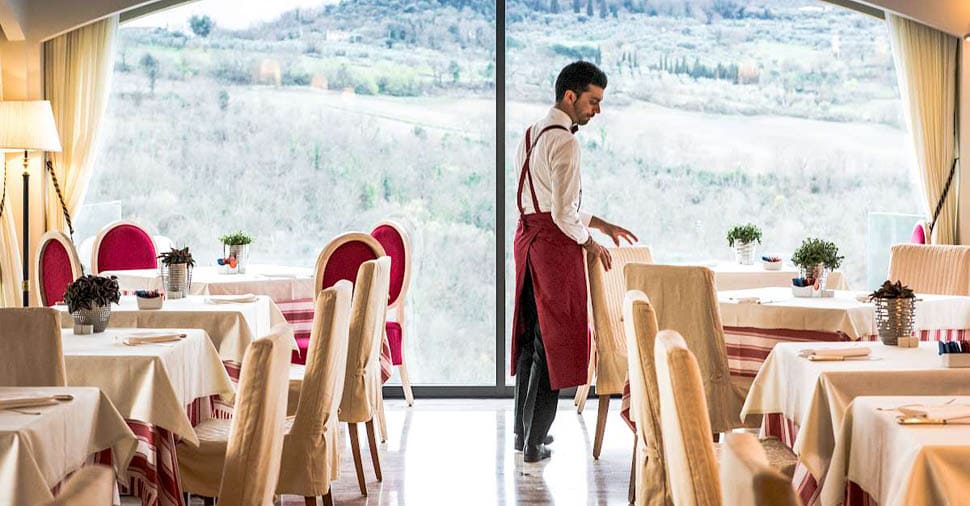
He is supported by a high-ranking sommelier like David Falsetti, able to clear the mileage counter within the confines of a single caption: the sip glides effortlessly from Umbria to Burgundy, soaring over the still uncharted semi-known realities.
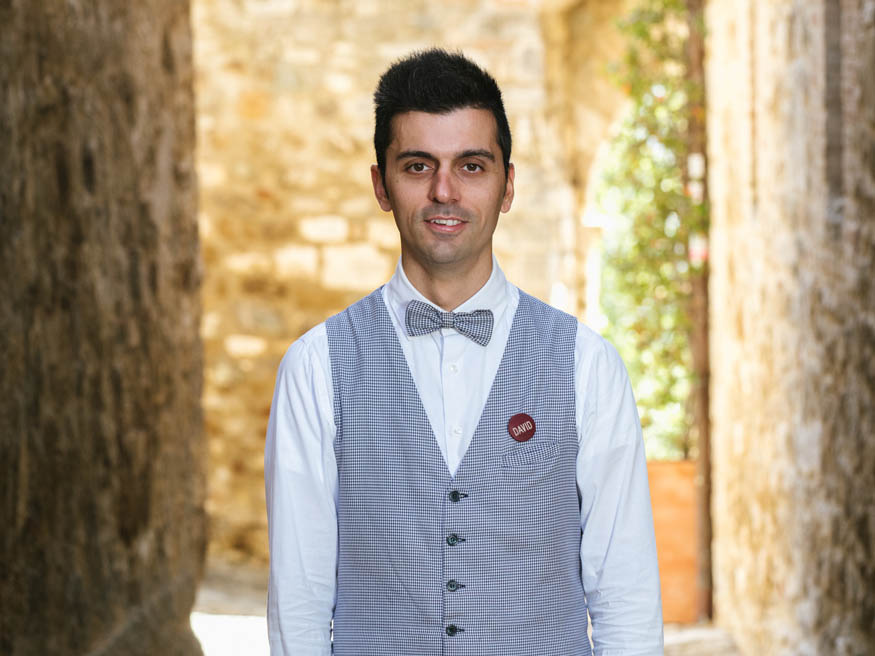
The opening kick goes straight into the goal, with the carbohydrate taming the robust local flavors. On the plate, a paté of chicken livers, brioche made from ancient grains from the Orcia mill, red onion noodles from Certaldo, and a light Vin Santo gel. The egocentrism of the offal is gently reproached by the twin scents of the bulb and the alcoholic finish, which also travels in the glass thanks to the excellent Sant'Antimo Fanti 2015. "I wanted to 'refine' the typical regional paté, obtaining a smoother and less granular texture. The onion is vacuum-marinated to preserve its essence," explains Matteo. And in the end, it's a restyling of that authentic crostino that is omnipresent in Tuscan home cooking, now suspended on the thread of modernity.

The attention is captured by the seared scallop with liquid escarole, squid ink sauce, raisins, and pine nuts. The vegetable that was once a side becomes a dressing, adding a hint of salinity that the fruit injects with just the right amount of sweetness. Almost a stolen kiss from Campania, because after all, "cooking from the territory means feeling part of the context in which you live, without forgetting where you come from and where you want to go," says the chef.
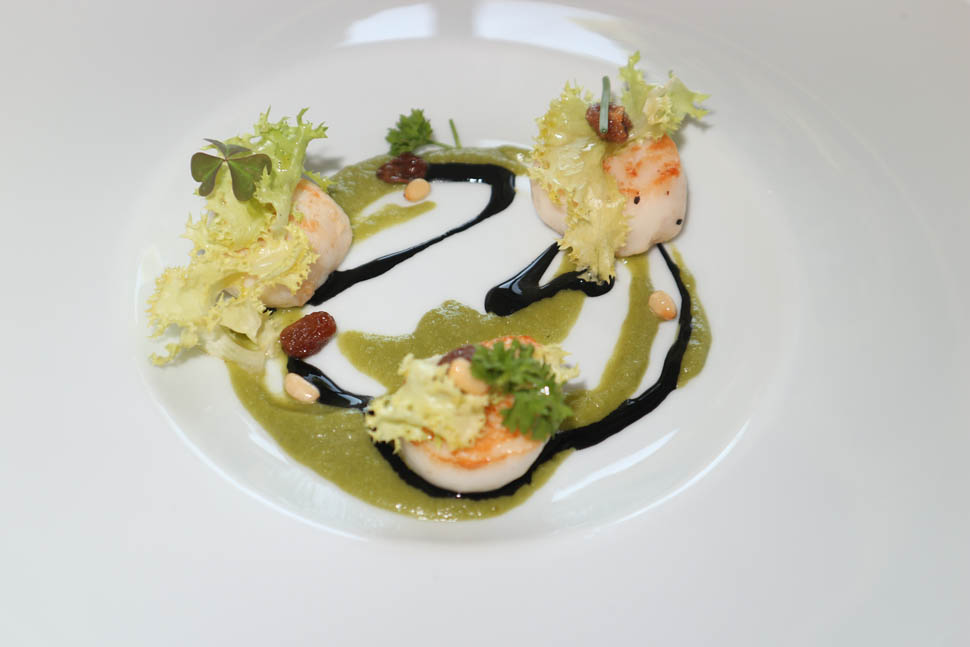
But the aromas of the Amalfi Coast also emanate from a patchwork risotto always on the menu, "born from my passion for bread with mortadella, seasoned with a citrusy spray." The salami takes the form of a foam, and the fruit appears in two shapes: "On one side, powdered dried peels; on the other, candied cubes, which I make in 4 days of full processing." A delicate rain of pistachio captures the swine's richness on the fly: "Thus, the sandwich becomes a first course." Simple to say; in reality, the acidic twist opens new glimpses in the animal-vegetable relationship.
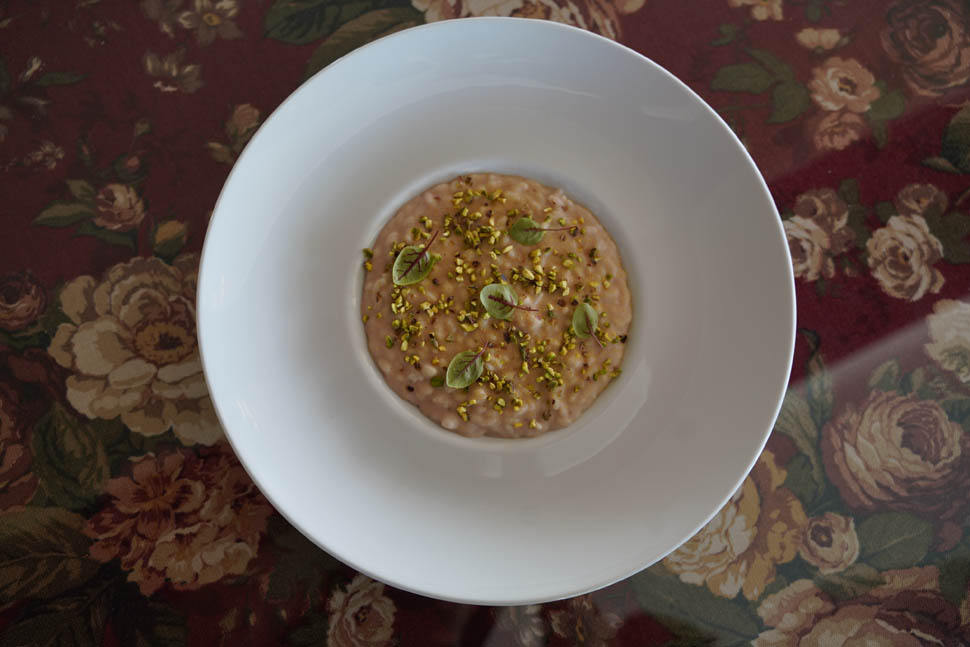
Instead, a crispy breading is the perfect counterpart of the lobster spaghetto, blended in its bisque made solely from carapaces with the addition of lime juice and zest. From top to bottom, the fork discovers a nest of creaminess accentuated by lemon butter, complementing the herb-scented bread crumble. Among the main courses, the search for fish does not diminish, while still caring for a treasure trove of long-aged meats: "I enjoy offering cuts with different marbling: Chianina, Pisana, or Maremmana, all subjected to controlled humidity and monitored until they exceed 60 days of maturation." We tried the first, in pole position for its buttery fiber and persistent umami. David pours a Montefalco Sagrantino DOCG 2015 signed by Fracanton, with an extremely long finish that supports the mouthful.
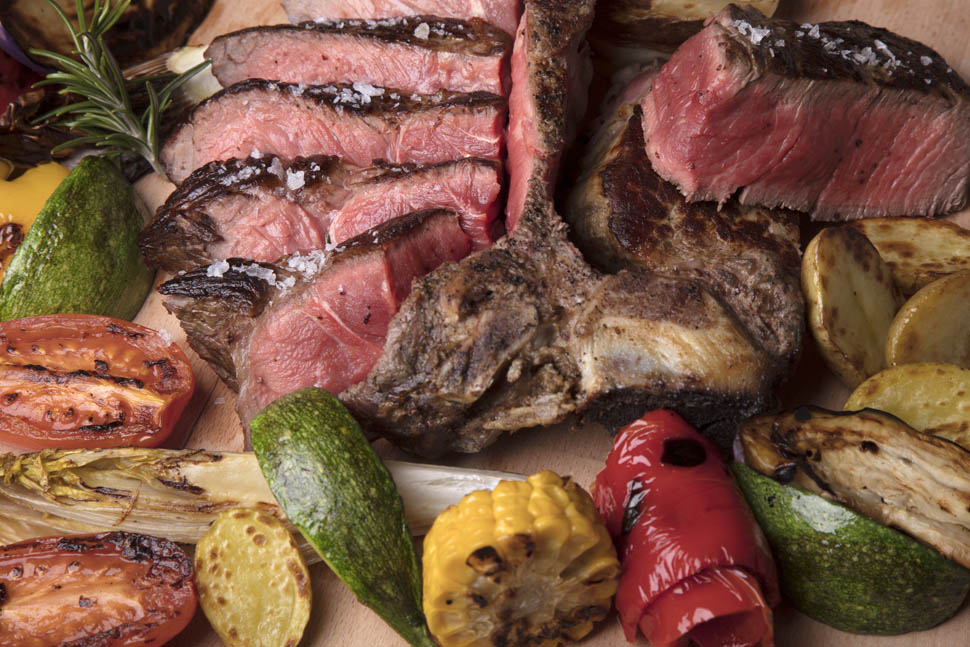
The last room poetically concludes the wandering lyrics: the chef presents a Bavarese with Afghanistan saffron, Arabica coffee, and capers from Pantelleria. "Combining these ingredients was originally intended for a risotto, as they are three elements in opposition to each other yet perfectly balanced, with the warm notes of spice and the pungent ones of toasting, combined with the strong savor of the vegetable. Then I transferred the concept to the dessert to leave guests with an emotional as well as gustatory memory of the just-concluded dinner." The saffron is indeed produced by Afghan women supported by the Costa family's foundation in achieving economic and personal independence. A melting pot of cultures in a spoonful, uniting two worlds in the same sweet embrace.
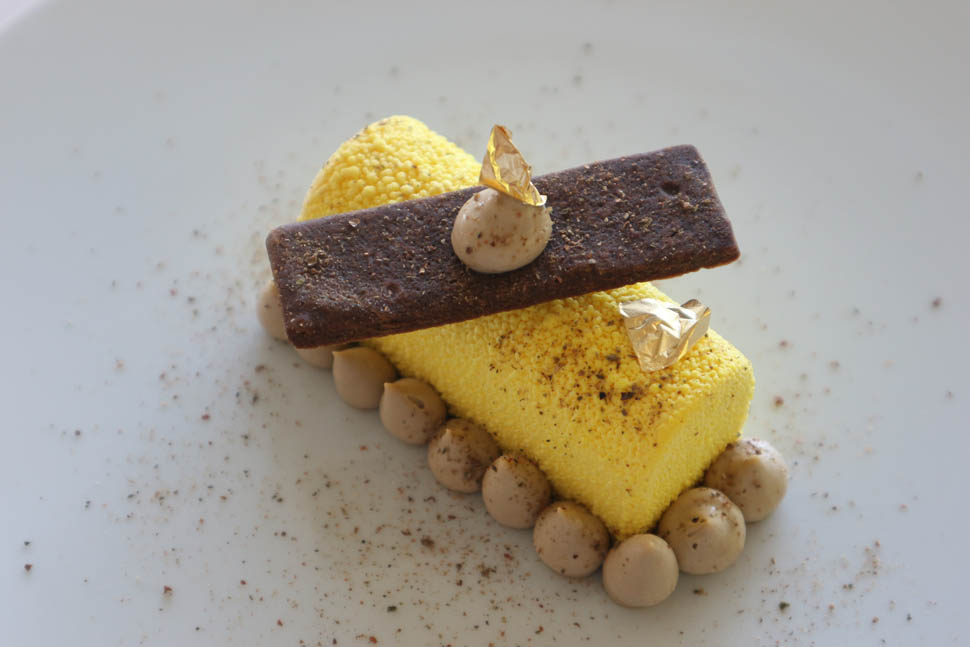
Address
Posta Marcucci Hotel
Via Ara Urcea, 43, 53027 Bagno Vignoni SI
Tel: 0577 887112
